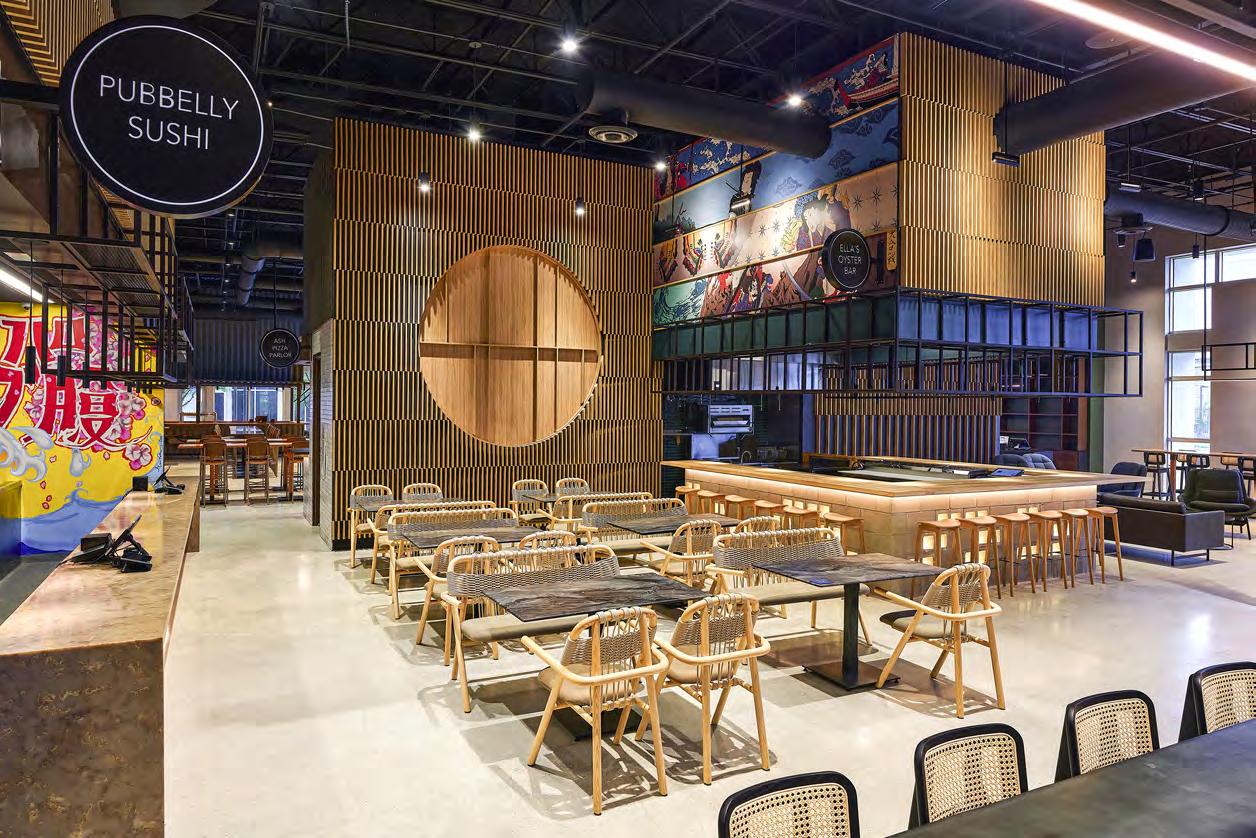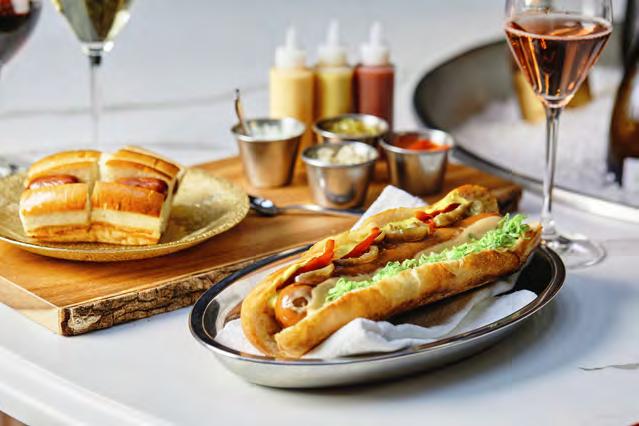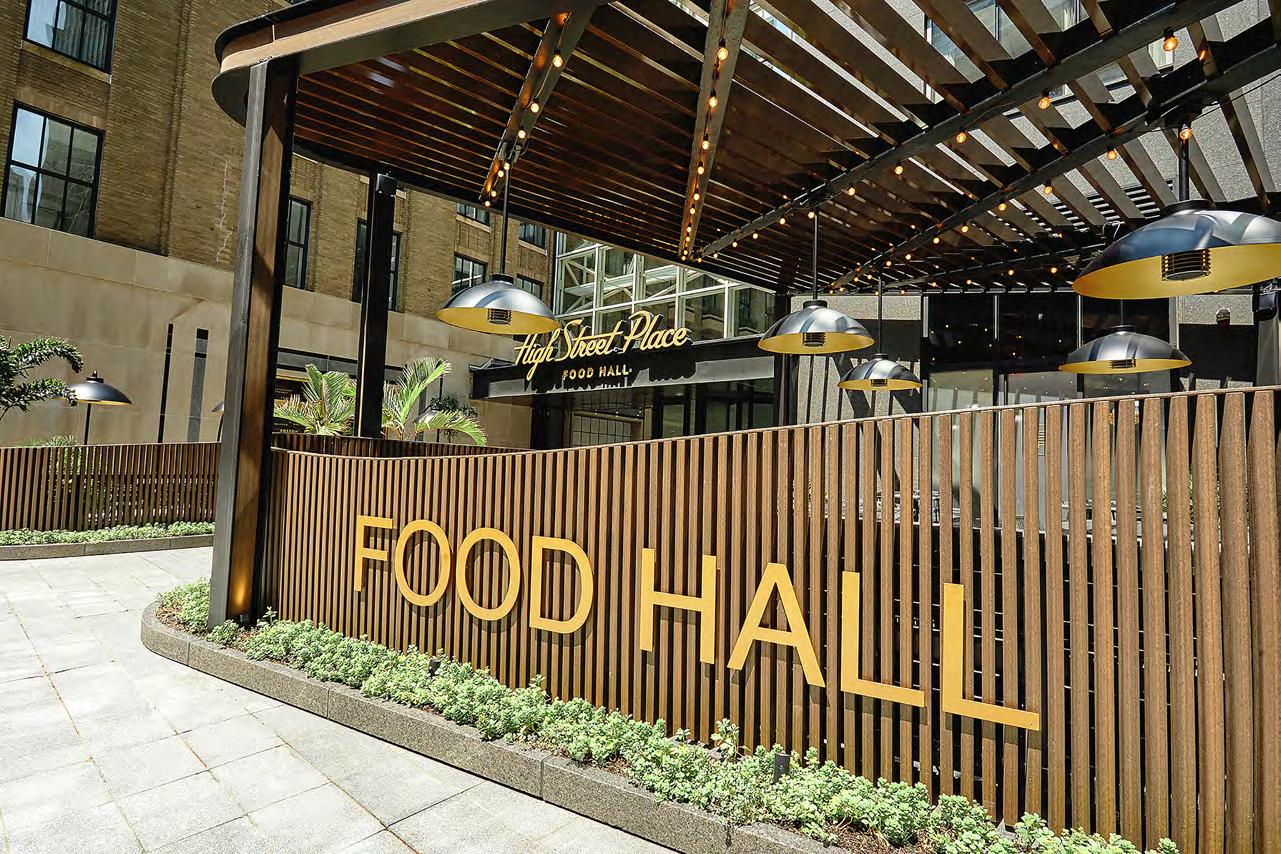
2 minute read
Design, getting
“It’s difficult to pinpoint what will stand out in such an array of impressive culinary offerings,” says Masi, “but three I’m excited for people to taste are Seoul Bird’s signature Seoul chicken sandwich, the Reuben from Wexler’s Deli, and Shalom Y’all’s chicken shawarma.”
The options are just as eclectic at the Tin Building by Jean-Georges. The visionary behind them is the eponymous Michelin-starred chef Jean-Georges Vongerichten. The 53,000-square-foot restored landmark building at the Seaport in Lower Manhattan houses everything from the Pâtisserie, where you can pick up banana and poppy seed cookies, to elaborate candy store The Spoiled Parrot, serving made-to-order ice cream, international sweets, and high-end chocolate.
In addition to vast culinary offerings, including six full-service restaurants, the space offers interactive experiences. You’ll find a tarot card reader tucked away in the upscale Chinese eatery House of The Red Pearl, a portrait artist at plant-based Seeds & Weeds eatery, and frequent live performers in the central Market.


Design, too, is getting elevated twists at many new food halls. Secluded nooks provide privacy for those who want to get some work done, lounge-style seating invites groups to linger over drinks, and outdoor space provides an alternative in many seasons for those with social distancing and air quality in mind.

Craving For Community
Blending innovative experiences with inviting, updated interiors and, of course, unique cuisine is key to the success of today’s new culinary collectives, says Tim Wickes, director of food hall operations at Olly Olly Market in New York’s Chelsea neighborhood. Chicagobased hospitality collective 16” on Center, which operates Olly Olly Market, is rooted in operating music venues and sees mixing great food with entertainment as the logical next step. Thus, alongside eateries like Forsyth Fire Escape and DdoBar, serving Korean pastries by a Michelin-starred chef, Olly Olly Market has large-scale permanent art installations and a rotating expo space that will be programmed with a variety of music-, fashion-, and art-driven events. “Any day of the week, our goal is [to have people] thinking, ‘What am I missing at Olly Olly Market today?’” Wickes says.


The fact that food halls frequently occupy underused retail and office space yields opportunity in the form of sheer physical footage, says High Street’s Johnson. Her food hall was crafted from a five-story atrium connecting two office buildings. Having that much room allowed people to run soccer drills during last year’s World Cup while High Street broadcast the games on Boston’s largest LED TV. For the U.S. Open this summer, the market will set out putting greens.
By mixing entertainment with tasty cuisine, Johnson says she believes the new generation of food halls is concocting a winning recipe to feed our post-pandemic craving for community. “I have had office tenants say, ‘Thank you for bringing my social life back again. We missed it for so long because everybody was working from home,’” she says. “People are really hungry to get together again.”











